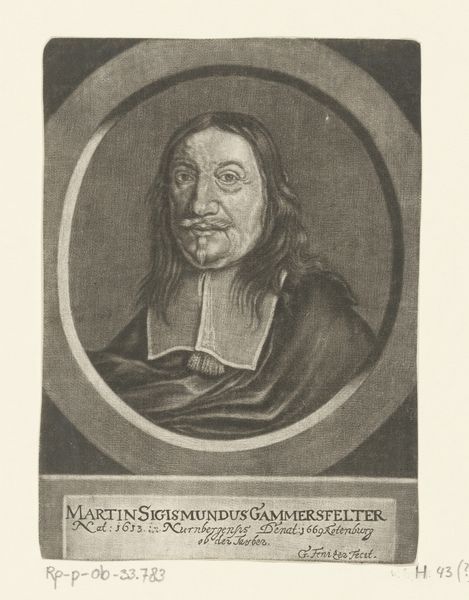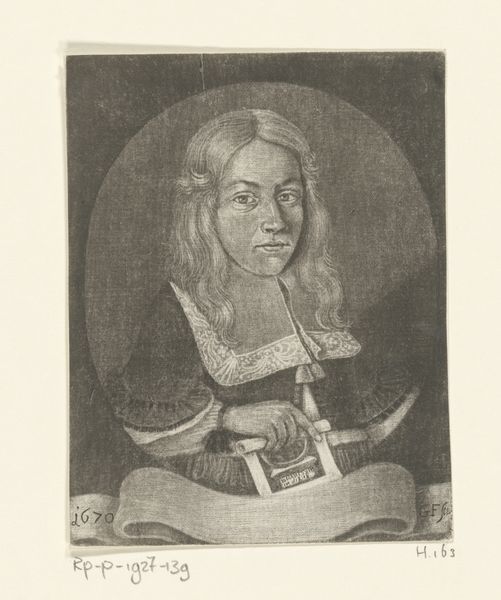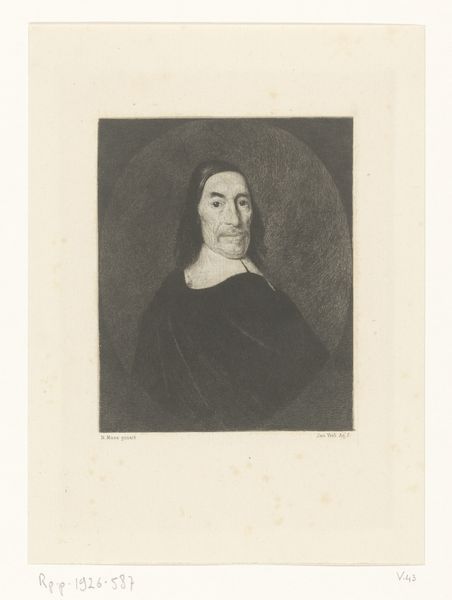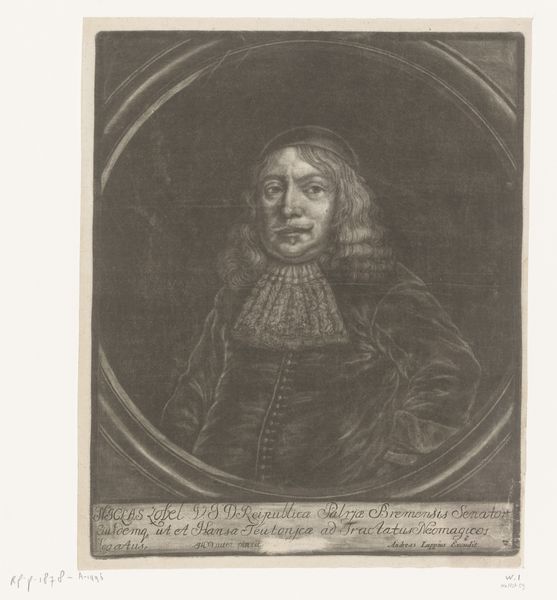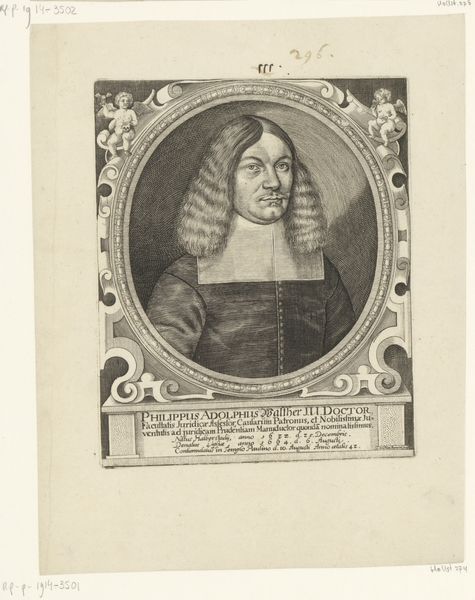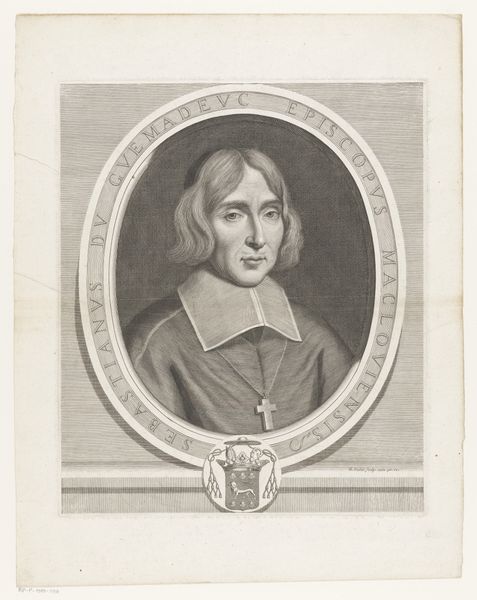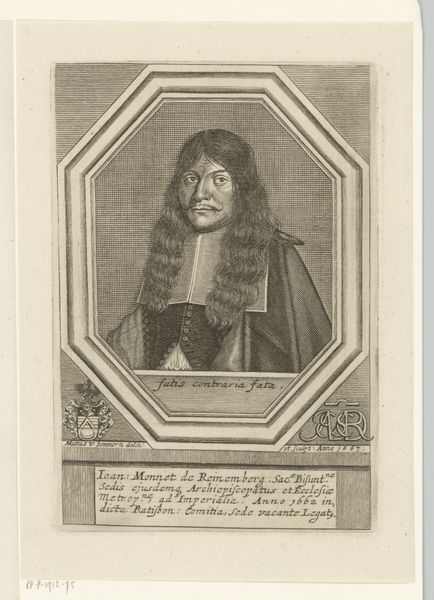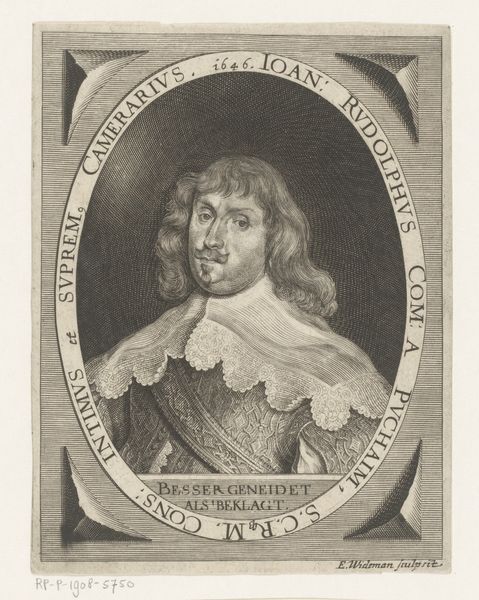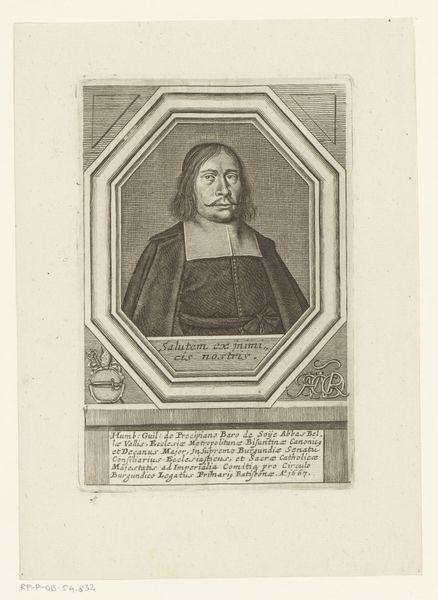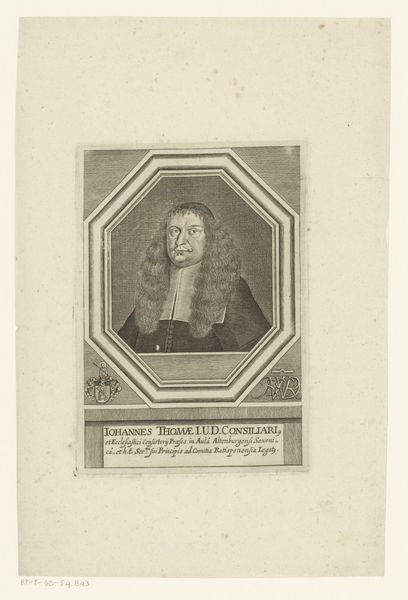
engraving
#
portrait
#
self-portrait
#
baroque
#
caricature
#
engraving
Dimensions: height 111 mm, width 79 mm
Copyright: Rijks Museum: Open Domain
Curator: This engraving, titled "Zelfportret", or "Self-Portrait," was created by Georg Fennitzer, sometime between 1656 and 1722. It is currently held in the collection of the Rijksmuseum. Editor: It strikes me immediately as quite austere. The oval frame seems to contain the sitter, giving the portrait a tight, almost suffocating feel. Curator: It's fascinating how Fennitzer, as both subject and creator, manipulates the printmaking medium. Notice the limited tonal range; the composition relies almost entirely on line work to define form and create depth within that oval constraint. It seems he understood negative space implicitly. Editor: And what might we infer from the fact that this is a self-portrait made available, multiplied via engraving, for public consumption? To me, it indicates something of the artist's social positioning, his attempt to inscribe himself into the historical record of his society and profession. How might the Baroque era conventions—like the flowing hair—have contributed to that agenda? Curator: The looping forms of the hair provide visual interest to what otherwise might be a monotonous shape, creating rhythm in direct counterpoint to the rigidity of his collar. In terms of semiotics, this becomes a potent signifier to read. The wavy lines against the geometric plane function as binary. Editor: One might speculate the binary reflects the tension within the art world, caught between craft and concept? The piece embodies Baroque tendencies but also perhaps subtly challenges the era's art world standards, simultaneously establishing Fennitzer and placing him within reach. Curator: Quite compelling indeed! We often perceive engravings as direct transcriptions of reality, but here, Fennitzer is not merely documenting his image. Instead, through calculated linework, he presents a carefully constructed persona that demands engagement from any serious, discerning viewer. Editor: For me, the lasting impact rests with what it shows about social identity during a critical historical period— and, frankly, the audacity required for such an act of self-commemoration!
Comments
No comments
Be the first to comment and join the conversation on the ultimate creative platform.
